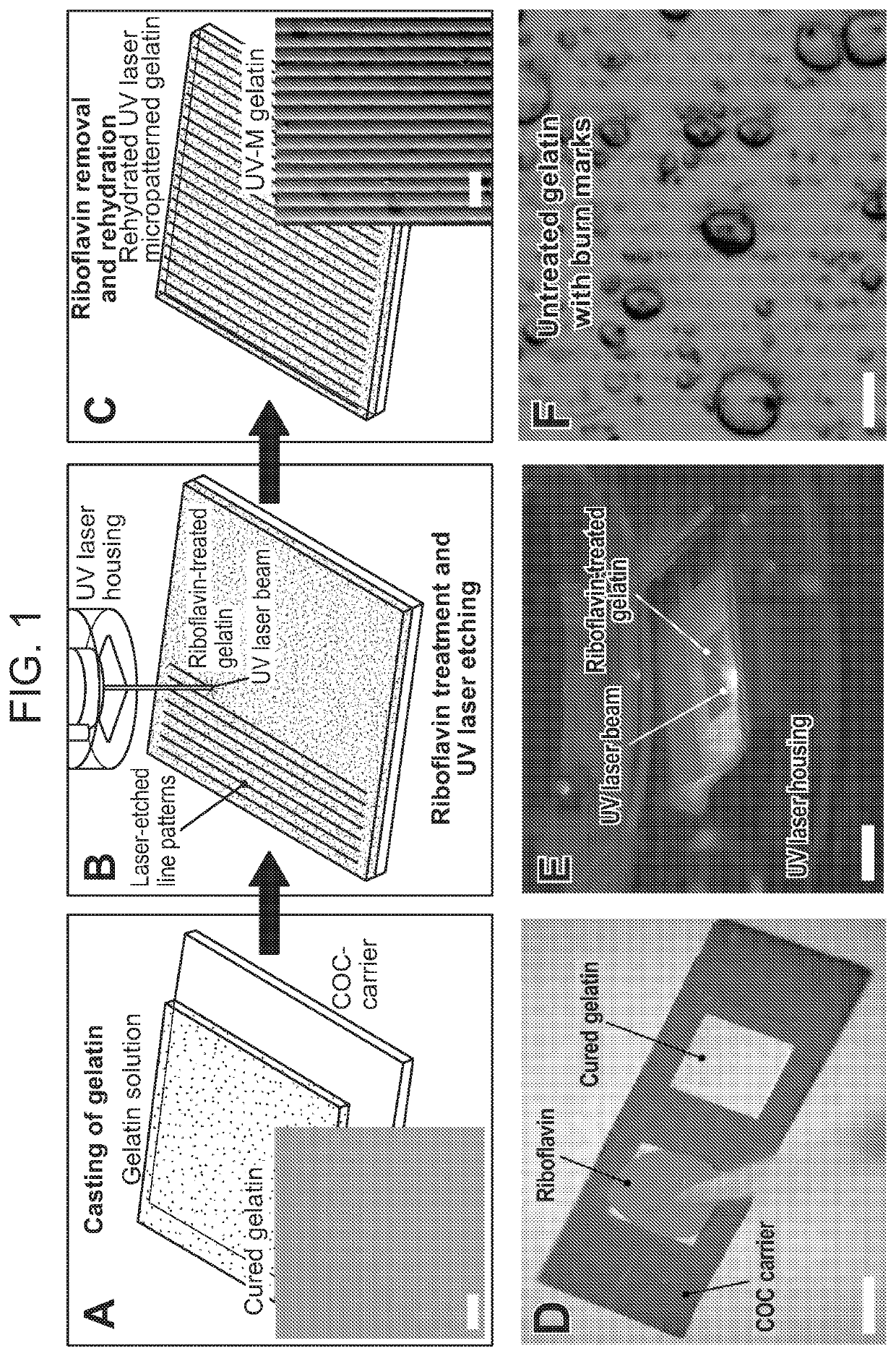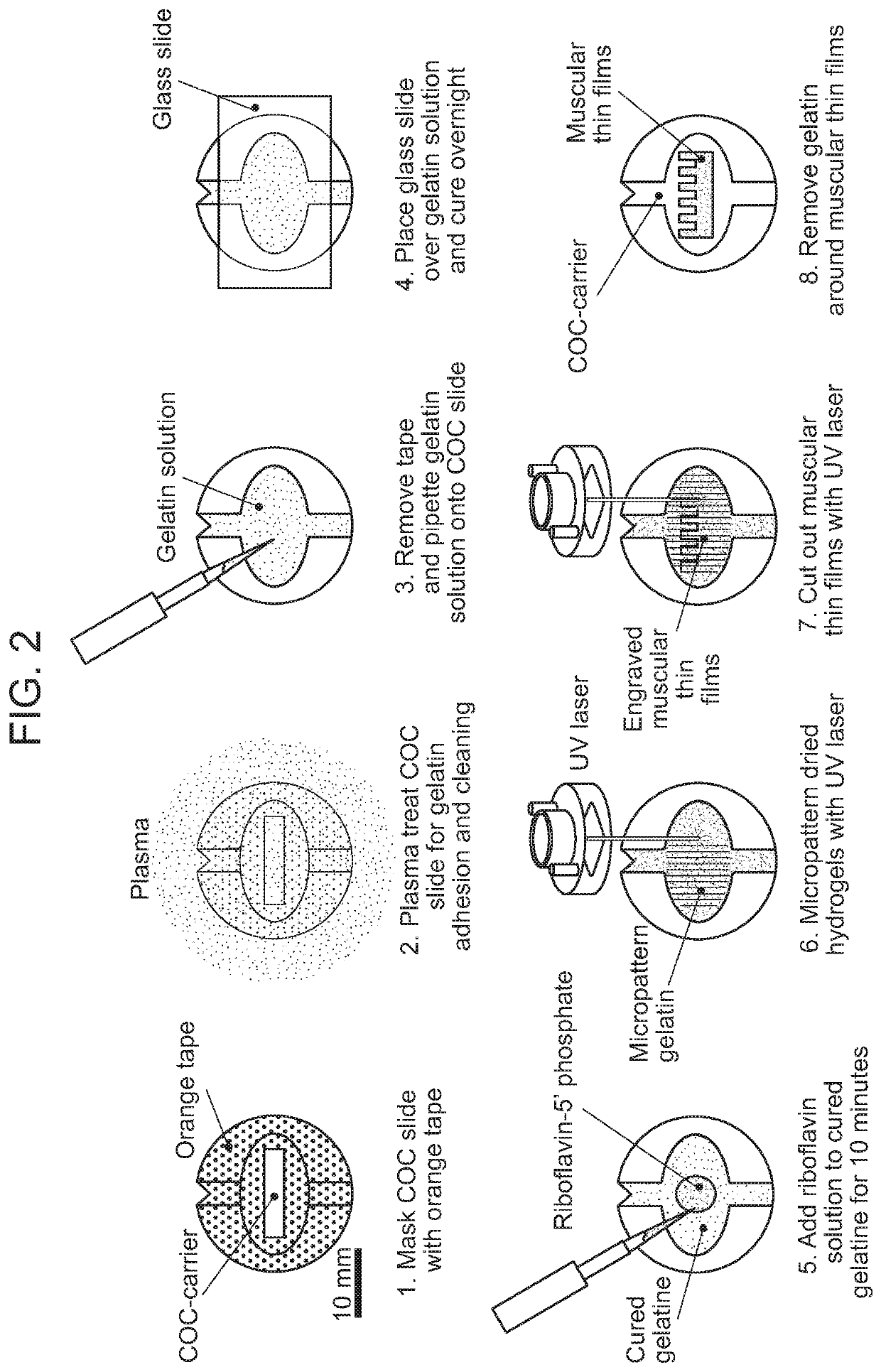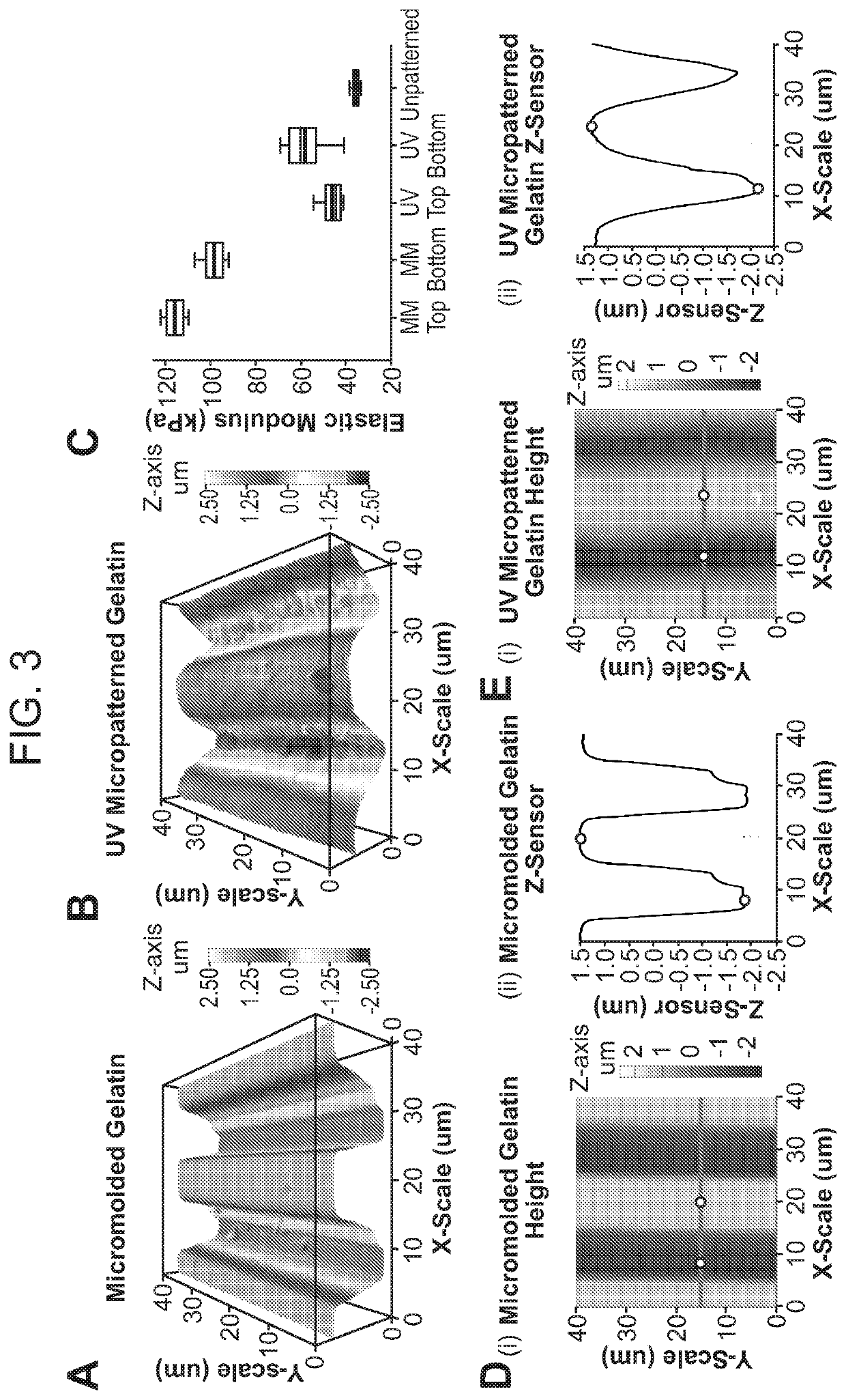Methods for optical micropatterning of hydrogels and uses thereof
a hydrogel and micro-patterning technology, applied in the field of optical micro-patterning hydrogels, can solve the problems of less than half the man-hours required by micro-molding methods, and achieve the effects of reducing process time, eliminating the need for a cleanroom, and high throughpu
- Summary
- Abstract
- Description
- Claims
- Application Information
AI Technical Summary
Benefits of technology
Problems solved by technology
Method used
Image
Examples
example 1
or Micropatterning Hydrogel Layers
[0220]FIG. 2 is a schematic showing an exemplary method for producing a micropatterned hydrogel by optical patterning in accordance with one embodiment of the invention. The steps shown therein are as follows:[0221]1. A tape masked COC slide was plasma treated to activate and clean the exposed polymer surface.[0222]2. An aqueous solution with 10% w / v gelatin and 4% w / v microbial transglutaminase was deposited onto the plasma treated surface.[0223]3. Gelatin was cast with a glass slide and cured for 12 hours.[0224]4. After 12 hours, the gelatin was hydrated in water to remove the glass slide and tape.[0225]5. The tape was peeled from the COC slide.[0226]6. The gelatin was treated with a riboflavin 5′ phosphate solution for 10 minutes, then rinsed in water.[0227]7. The gelatin was dried.[0228]8. The gelatin was patterned with a 355 wavelength UV laser (LPKF Protolaser U3).[0229]9. The patterned gelatin was rinsed thoroughly with water, e.g., prior to ...
example 2
or Photopatterning Gelatin Hydrogels
[0236]Organ-on-chip technology combines approaches from cell biology, physiology, and tissue engineering with microsystems engineering and microfluidics to create a microphysiological environment of living cells that recapitulate human tissue and organ-level functions in vitro. The goal of organs-on-chips is to improve preclinical assays for drug safety and development by mimicking the physiology and pathophysiology of healthy and diseased human tissues. However, to become a next-generation tool for drug development and biomedical research in industry, organ-on-chips need to be amenable to large-scale continuous, automated, and quality-controlled fabrication, as opposed to the small-batch manufacture predominant in academic research. In particular, scalable fabrication strategies are needed for producing organ-specific 2D and 3D hydrogel extracellular matrix scaffolds that provide micromechanical cues for cellular adhesion, shape, differentiation,...
PUM
 Login to View More
Login to View More Abstract
Description
Claims
Application Information
 Login to View More
Login to View More - R&D
- Intellectual Property
- Life Sciences
- Materials
- Tech Scout
- Unparalleled Data Quality
- Higher Quality Content
- 60% Fewer Hallucinations
Browse by: Latest US Patents, China's latest patents, Technical Efficacy Thesaurus, Application Domain, Technology Topic, Popular Technical Reports.
© 2025 PatSnap. All rights reserved.Legal|Privacy policy|Modern Slavery Act Transparency Statement|Sitemap|About US| Contact US: help@patsnap.com



